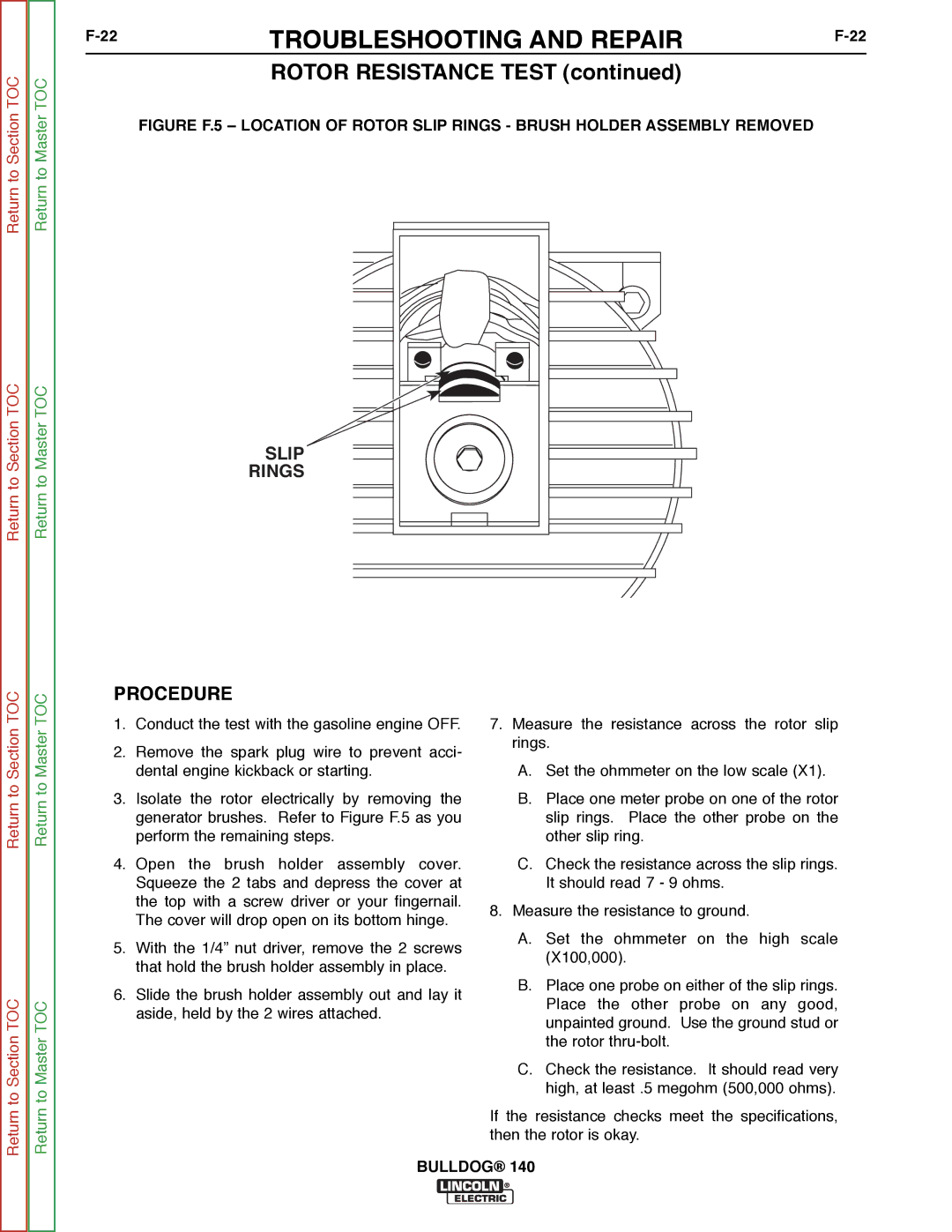
Return to Section TOC
Return to Section TOC
TOC
Return to Master TOC
Return to Master TOC
TOC
TROUBLESHOOTING AND REPAIR | ||
|
ROTOR RESISTANCE TEST (continued)
FIGURE F.5 – LOCATION OF ROTOR SLIP RINGS - BRUSH HOLDER ASSEMBLY REMOVED
SLIP
RINGS
PROCEDURE
Return to Section
Return to Section TOC
Return to Master
Return to Master TOC
1.Conduct the test with the gasoline engine OFF.
2.Remove the spark plug wire to prevent acci- dental engine kickback or starting.
3.Isolate the rotor electrically by removing the generator brushes. Refer to Figure F.5 as you perform the remaining steps.
4.Open the brush holder assembly cover. Squeeze the 2 tabs and depress the cover at the top with a screw driver or your fingernail. The cover will drop open on its bottom hinge.
5.With the 1/4” nut driver, remove the 2 screws that hold the brush holder assembly in place.
6.Slide the brush holder assembly out and lay it aside, held by the 2 wires attached.
7.Measure the resistance across the rotor slip rings.
A.Set the ohmmeter on the low scale (X1).
B.Place one meter probe on one of the rotor slip rings. Place the other probe on the other slip ring.
C.Check the resistance across the slip rings. It should read 7 - 9 ohms.
8.Measure the resistance to ground.
A.Set the ohmmeter on the high scale (X100,000).
B.Place one probe on either of the slip rings. Place the other probe on any good, unpainted ground. Use the ground stud or the rotor
C.Check the resistance. It should read very high, at least .5 megohm (500,000 ohms).
If the resistance checks meet the specifications, then the rotor is okay.
